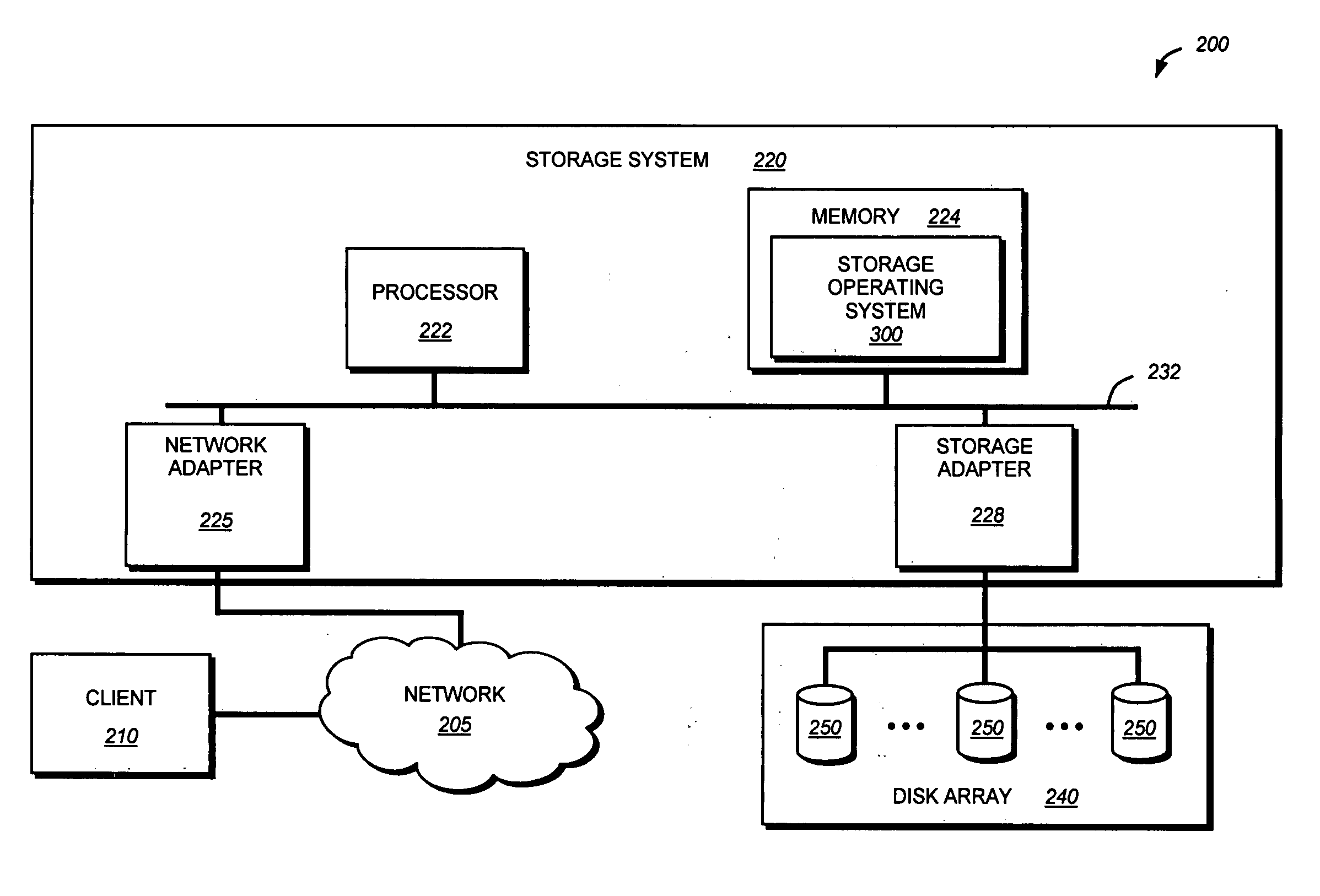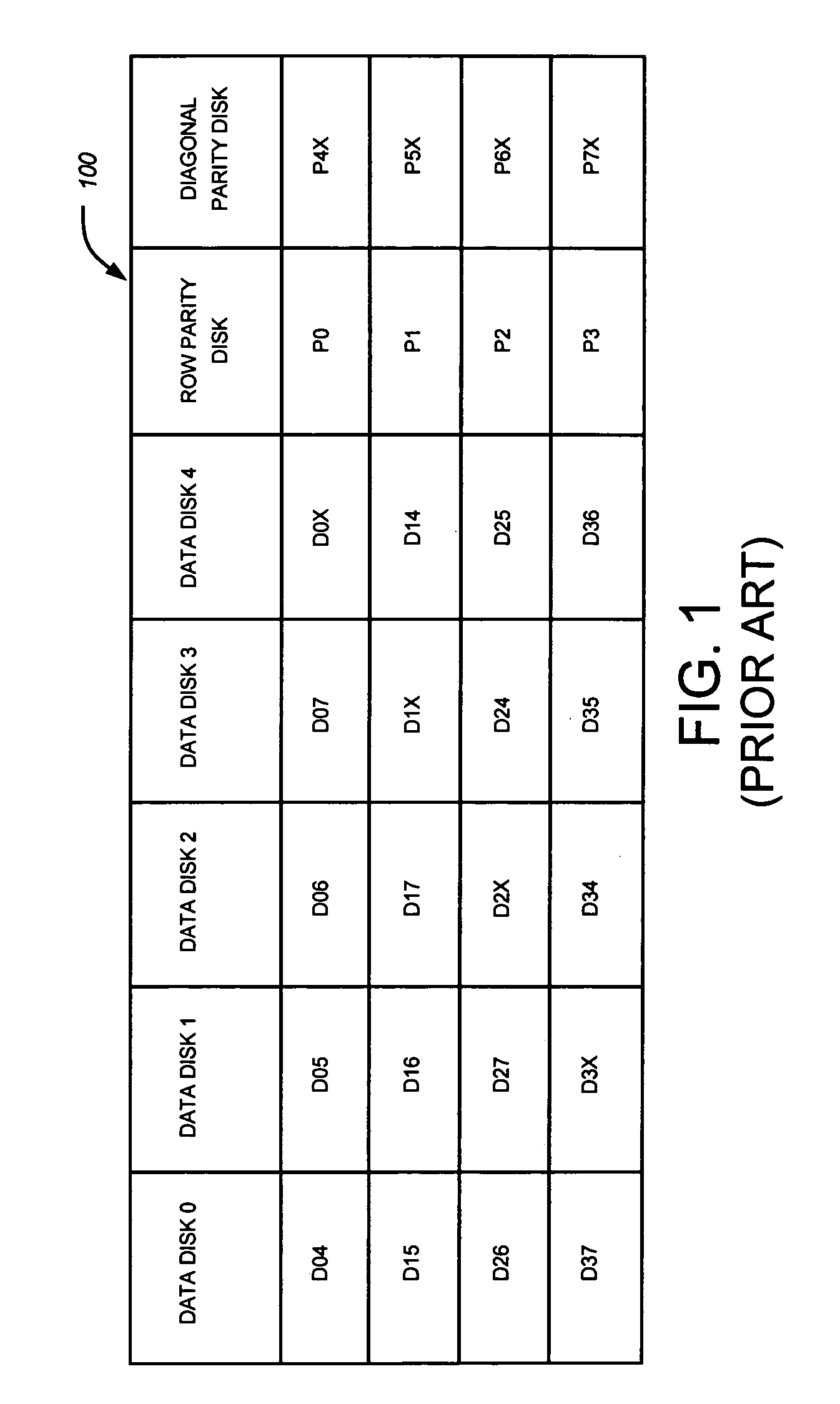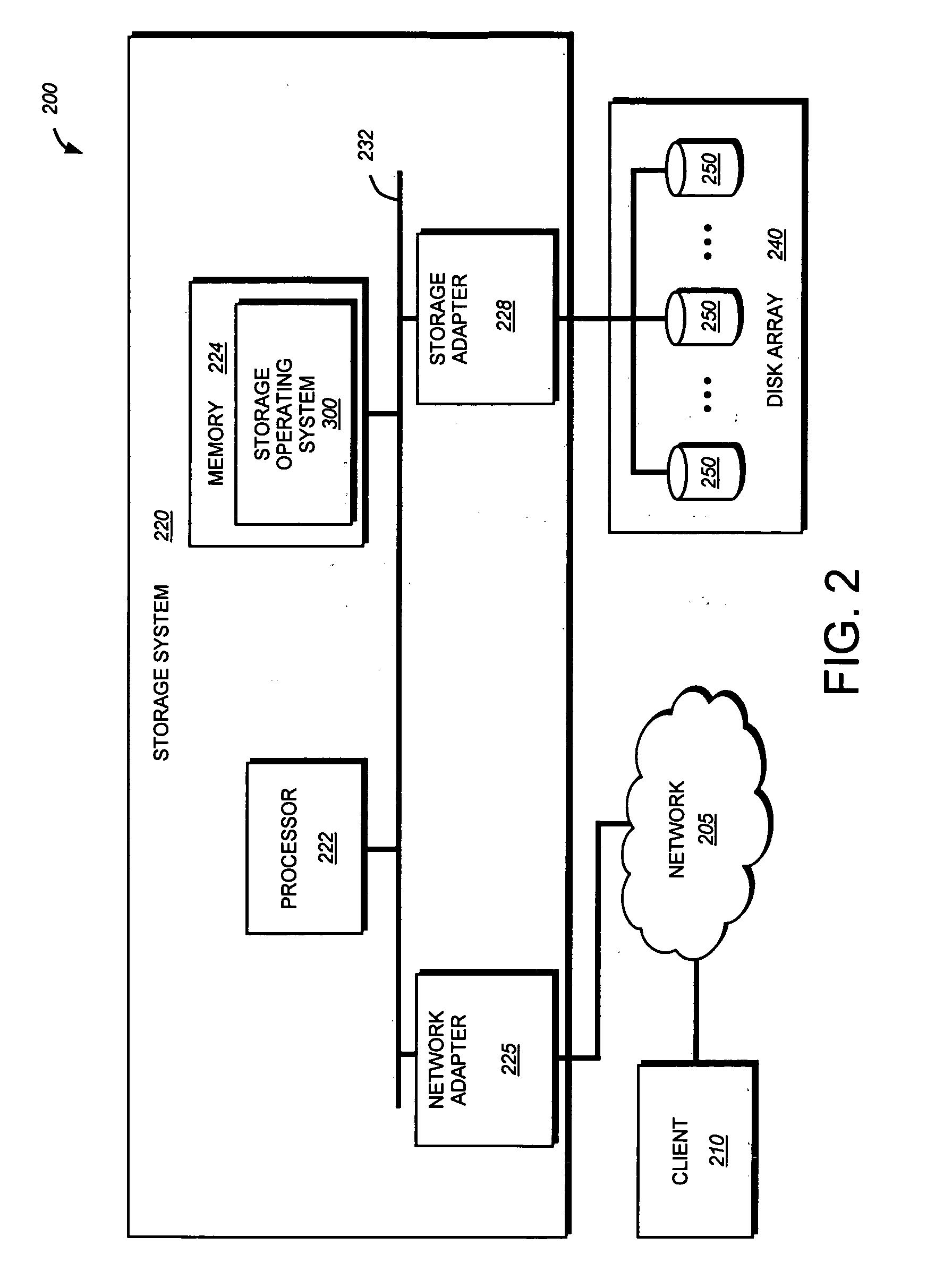Triple parity technique for enabling efficient recovery from triple failures in a storage array
a storage array and triple parity technology, applied in the field of arrays of storage systems, can solve the problems of inability to recover data from the device, data loss, disk failure, etc., and achieve the effect of minimizing computation overhead, minimizing computation load, and minimizing computation overhead
- Summary
- Abstract
- Description
- Claims
- Application Information
AI Technical Summary
Benefits of technology
Problems solved by technology
Method used
Image
Examples
Embodiment Construction
[0046] A. Storage System Environment
[0047]FIG. 2 is a schematic block diagram of an environment 200 including a storage system 220 that may be advantageously used with the present invention. The inventive technique described herein may apply to any type of special-purpose (e.g., file server or filer) or general-purpose computer, including a standalone computer or portion thereof, embodied as or including a storage system 220. Moreover, the teachings of this invention can be adapted to a variety of storage system architectures including, but not limited to, a network-attached storage environment, a storage area network and a disk assembly directly-attached to a client or host computer. The term “storage system” should therefore be taken broadly to include such arrangements in addition to any subsystems configured to perform a storage function and associated with other equipment or systems.
[0048] In the illustrative embodiment, the storage system 220 comprises a processor 222, a mem...
PUM
 Login to View More
Login to View More Abstract
Description
Claims
Application Information
 Login to View More
Login to View More - R&D
- Intellectual Property
- Life Sciences
- Materials
- Tech Scout
- Unparalleled Data Quality
- Higher Quality Content
- 60% Fewer Hallucinations
Browse by: Latest US Patents, China's latest patents, Technical Efficacy Thesaurus, Application Domain, Technology Topic, Popular Technical Reports.
© 2025 PatSnap. All rights reserved.Legal|Privacy policy|Modern Slavery Act Transparency Statement|Sitemap|About US| Contact US: help@patsnap.com



